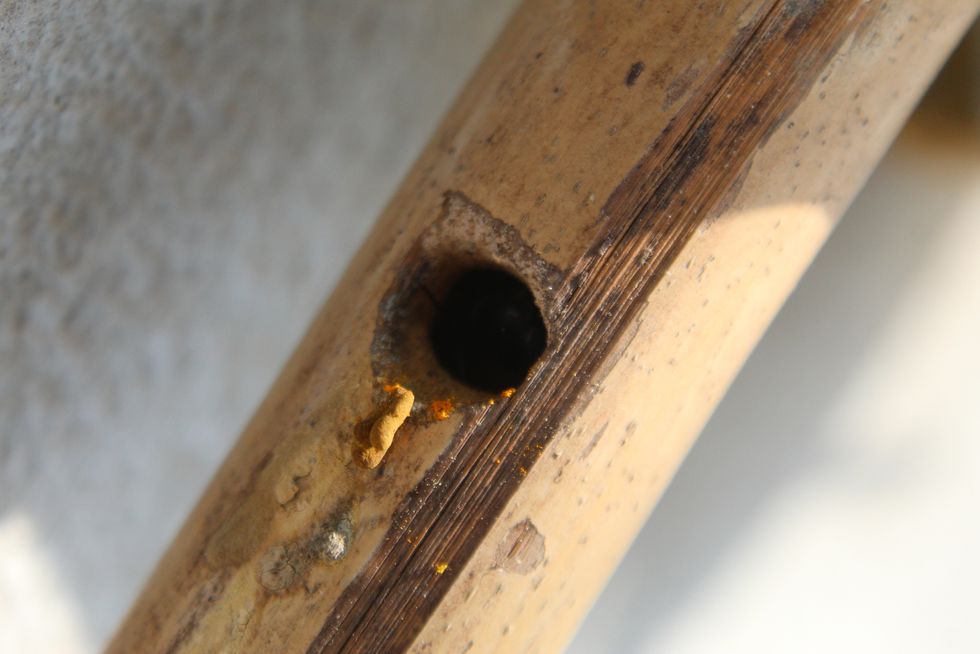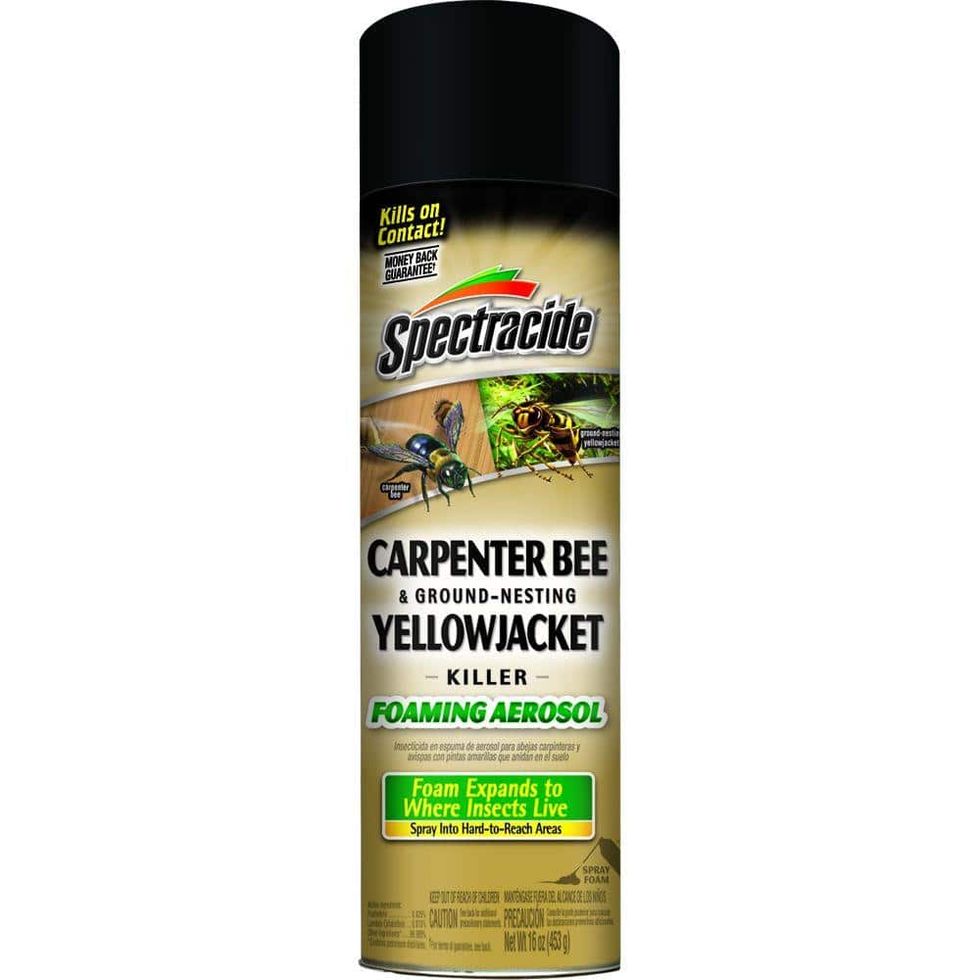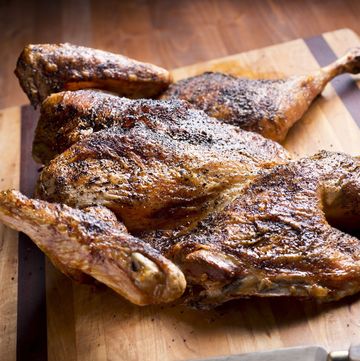You love your garden, and you want to support pollinators (like butterflies and hummingbirds). But it’s tough to be patient once carpenter bees enter start boring holes in the side of your house! If you’ve ever seen a perfectly round ½-inch hole in your deck, outdoor furniture, mailbox post, the kids’ playset, or even the cedar siding on your house, you may have carpenter bees. Another telltale sign is a trace of coarse sawdust on the surface beneath the hole.
Carpenter bees (Xylocopa virginica) actually are amazing creatures. They’re native pollinators that are not aggressive. “The females are just a solitary mom taking care of her own babies,” says Mike Raupp, PhD, professor emeritus of entomology and extension specialist, at the University of Maryland. “She’s not at all interested in you when you’re in the garden. She’s just doing what comes naturally to her.”
Carpenter bees sometimes are mistaken for bumble bees, which have a similar appearance. A carpenter bee is about ¾ to 1-inch long and nest in excavated tunnels in wood. “An easy way to tell the difference between carpenter bees and bumble bees is that carpenters have a bald abdomen, or a ‘shiny hiney’,” says Becky Griffin, pollinator health associate with the University of Georgia’s Great Southeast Pollinator Census. “Bumble bees have a fuzzy rear and nest in the ground. They’re not drilling into your house.”
Ahead, here’s what else you need to know about carpenter bees and what you can do to get rid of them!
Can carpenter bees sting?
Males have no stingers. “Females have stingers but it’s highly unlikely she will sting you unless you grab her and squeeze her,” says Raupp.
Why do carpenter bees drill holes in my house?
Adult carpenter bees emerge in the spring, looking for love. After a female mates, she starts building a home by excavating a hole with her incredibly strong mandibles. She drills into wood about a half-inch, then makes a turn and keeps tunneling parallel to the grain of the wood. She will create a series of brood cells where she’ll eventually lay eggs, and each tunnel takes more than a month to build, says Raupp. You have to respect her diligence!
Meanwhile, the male carpenter bees like to show off, guarding the nesting site and battling it out with other males, swooping and grappling, with both bees falling to the earth before one gives up and takes off. “The males are territorial and may divebomb you, too, if you get too near a nesting site,” says Raupp.
The good news is that most of the time, carpenter bees are just a nuisance and rarely cause severe damage. Occasionally, repeated boring over successive years can become a problem when holes contribute to moisture intrusion and decay, or if woodpeckers drill into the wood in search of bee larvae in the tunnels.
How do I stop carpenter bees from drilling?
Good luck with that! “This is what they’re evolved to do, and you’ve invaded their territory,” says Raupp. However, carpenter bees are less likely to drill into painted wood, hardwoods, and pressure treated wood, though there are no guarantees.
You also can try protecting rough areas, such as the ends of timbers, with wire screening or metal flashing. Also, they can’t penetrate vinyl siding, aluminum siding, or cement board siding. Insecticides made for bees applied to a wood surface may be effective for a short time but must be reapplied, and this is difficult to do on a large scale.
Bee traps may catch one or two bees, but they’ll also catch other types of beneficial pollinators. And while there’s some evidence essential oils, such as peppermint, may repel these bees, there’s no proven formula or application method yet, says Griffin. Though it sounds harsh, a simple swat that takes out only the female when she starts building is low-tech, but effective.
Obviously, a hole in a mailbox post isn’t as concerning as holes all over your cedar siding. “I live in a log cabin in the woods,” says Griffin. “I can’t have them attacking my house.” For this type of situation, prevention is key. “In the spring, I pay attention to when she is first building her hole so I can stop her early on.”
Should I plug up carpenter bee holes?
Yes, because treating the hole is the most effective method for reducing future nesting. First, spray an insecticide that’s labeled for bees and wasps directly in the hole, says Raupp. After a week, plug tunnel entrances with wood putty or caulking compound. All holes should be sealed because tunnels may be used as overwintering sites or reused for nesting next spring.
Much of the time, you can live side-by-side with carpenter bees without needing to use pesticides. A little tolerance and understanding that the female carpenter bee is just doing her job as a mom goes a long way! If it’s something like a fence post, just replace it every few years. “But if the damage is ruining your siding or causing structural issues, contact a pest control company,” says Raupp.
Arricca Elin SanSone has written about health and lifestyle topics for Prevention, Country Living, Woman's Day, and more. She’s passionate about gardening, baking, reading, and spending time with the people and dogs she loves.














